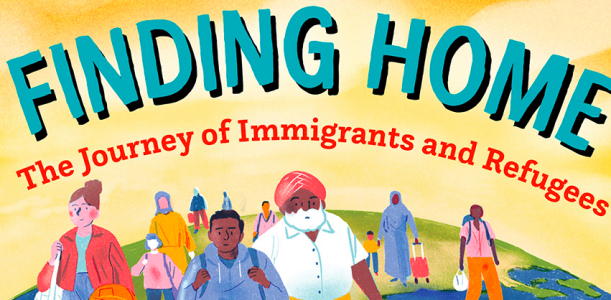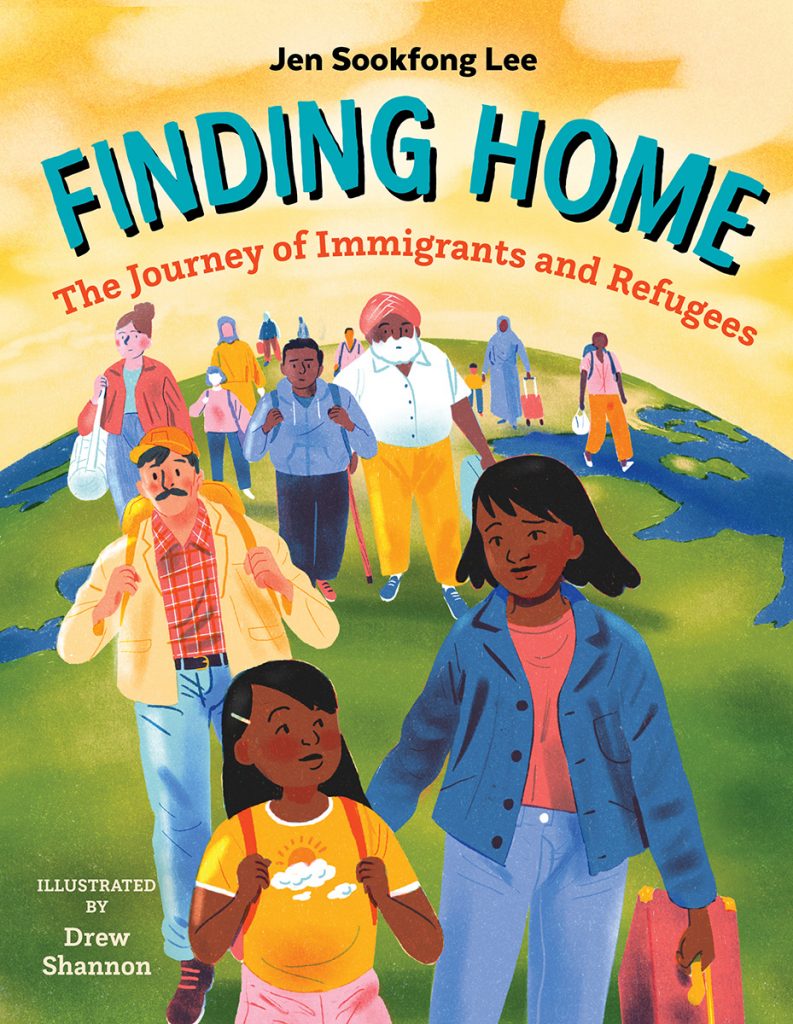What drives people to search for new homes? From war zones to politics, there are many reasons why people have always searched for a place to call home. In Finding Home: The Journey of Immigrants and Refugees we discover how human migration has shaped our world. We explore its origins and the current issues facing immigrants and refugees today, and we hear the first-hand stories of people who have moved across the globe looking for safety, security and happiness. Author Jen Sookfong Lee shares her personal experience of growing up as the child of immigrants and gives a human face to the realities of being an immigrant or refugee today.
* * *
Finding Home: The Journey of Immigrants and Refugees is out now!
This is the first book in the new Orca Think middle-grade nonfiction series about the issues making headlines today.
Readers ages 8-13 are currently eligible to enter the Finding Home writing contest, ending May 16, 2021.
Below, read an excerpt from the book’s introduction and listen to a special podcast episode where author Jen Sookfong Lee discusses the book with her 10-year-old son, Oscar.
* * *
I grew up in Vancouver, British Columbia, in a working-class neighborhood on the city’s east side, where my friends and their families were from all over the world. There was Shalesh, whose parents had come from Fiji. There was Nadia, whose grandparents had left Italy after World War II. There was Nadine, whose family were members of the Skwxwú7mesh (Squamish) First Nation. There were the Tran brothers, who came from Vietnam after living in a refugee camp in Hong Kong. And then there was me, Jen. My grandfather arrived in Canada from China in 1913, at the age of 17.
Our diverse neighborhood was the direct result of immigration, which is when people move permanently to a country that is not the one they were born in. By the time I was in elementary school, I knew that everyone’s family was different and that their stories—how they came to live in East Vancouver, what they liked to eat, what they believed about religion—were even more diverse. When I visited a friend’s house after school, their parents might be cooking stuffed peppers or curried goat or noodle soup, but, just like my parents, they also supervised homework, tried to get their kids to eat fruits and vegetables, and looked through stacks of bills with worried expressions on their faces. I learned, by watching my friends and their parents, that all of our families were the same at our core. We all wanted to live in a decent house, eat good food and go to good schools, and each parent wanted their children’s lives to be happier and safer than their own.
Immigration has always influenced the way in which I observe, learn and make conclusions with an open mind. When you grow up in a diverse community, everyone’s home seems different because it’s not like your own. In my family’s dining room stood a row of porcelain Buddha figures that my mother kept for good luck. The one I remember best sat on an elaborate green chair, holding two peaches in his hands—symbols for a long life. In my friend Lina’s house, a portrait of Mary, mother of Jesus, hung above the television, a rosary (a beaded Catholic prayer necklace) draped around the top right-hand corner of the picture. And in Mrs. Fox’s house up the street there was a framed hockey jersey on the wall, from her son’s career playing in the National Hockey League. These objects came from different cultures, but they were all important to the families I knew. They were symbols of happiness, security and good health.
In this book you’ll read about people who leave one country and go to another. Their reasons for leaving may have to do with jobs or school or family. These people are known as immigrants. Sometimes people are forced to move away from their homes because of war, persecution or crime. These people are called refugees. If you live in a country such as Canada, the United States or Australia, all of which have large communities of immigrants and refugees from all over the world, living with people whose cultures are different from yours isn’t anything new. Maybe you have friends whose family were immigrants. Maybe you know someone from Syria or the Republic of South Sudan or Guatemala, countries where politics, war and lack of jobs have forced many families to flee their homes and seek safety elsewhere. In chapter 2, you will learn more about how people become immigrants or refugees and what drives them to move to other countries.
You might have heard or read news stories about government policies that are designed to keep people from certain countries from entering others. There are the children from Central America who have been detained (held in custody) in the United States, away from their parents, who are called migrants. The word migrant is used for anyone who moves from one country to another but is most commonly used for people who are seeking asylum or who have been living in poverty and are moving to another country where there are better opportunities for education and work. There are the generations of Palestinian refugees living in the Gaza Strip, a long and narrow area of land that borders Israel on one side and Egypt on another. These refugees, whose numbers are growing in an already densely populated place, are often caught up in the tensions between the State of Palestine, which governs Gaza, and Israel, which controls many aspects of life in Gaza, including trade, water, electricity and border crossings. And there are politicians in other parts of the world who are trying to stop refugees and immigrants from entering their countries altogether, claiming that people who are not born within their borders are threats to security, safety and jobs.
It can be difficult to know, when you read these news stories, whether immigration is a good thing or not. In this book I’ll introduce you to people who are or have been immigrants or refugees, whose journeys from their countries of birth to the countries they now call home have been challenging or joyful or long. I’ll explain how human migration can happen and the circumstances that lead to the decision to migrate. And I’ll talk about how immigrants shape their communities, what they contribute and how they live. By the end of this book, I hope you can come to your own conclusions about immigrants and refugees. This is a topic that is complicated and sometimes difficult to understand but is also important to our views on the world and the places we live. Because 1 in every 35 people worldwide is a migrant, it’s a topic in the news, and one that affects every country, city, neighborhood and school. After all, what would your community look like without human migration? I’m guessing very, very different.
* * *
Jen Sookfong Lee was born and raised on Vancouver’s East Side, and she now lives with her son in North Burnaby. Her books include The Conjoined, nominated for the International Dublin Literary Award and a finalist for the Ethel Wilson Fiction Prize; The Better Mother, a finalist for the City of Vancouver Book Award; The End of East; Gentlemen of the Shade; Chinese New Year and The Animals of Chinese New Year. Jen was a columnist for CBC Radio One’s The Next Chapter for many years. She teaches at The Writer’s Studio Online with Simon Fraser University, edits fiction for Wolsak & Wynn and co-hosts the literary podcast Can’t Lit.
Listen to her special podcast episode about Finding Home!



